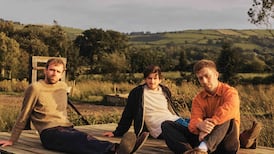Alan Moore loves hedgerows. They are remnants of the wilder world of his boyhood. The semi-retired psychiatrist grew up on a dairy farm on the River Liffey in Lucan, in west Co Dublin. As a medical professional he knows the benefits of trees for our wellbeing. “There are studies showing people in streets with trees have the health of people seven years younger,” he says, referring to Canadian research published in 2015 that showed residents of neighbourhoods with higher tree density feel younger and are less likely to have cardiometabolic conditions such as hypertension, obesity and diabetes.
A drone study of farms being carried out by Teagasc will show that between 600,000 and a million tonnes of carbon are stored by our hedgerows. They are an irreplaceable resource, Moore told a Dáil committee recently as part of his work with Hedgerows Ireland.
Ireland’s 680,000km of hedgerows “are very poorly protected and very poorly rewarded in terms of good quality”, he explains. This prompted him to set up Hedgerows Ireland two years ago. Along with Birdwatch Ireland’s Oonagh Duggan, they want “a better CAP for hedgerows”. Currently the common agricultural policy puts hedgerows in pillar two – the second-tier, more-complicated environmental category. They should be in pillar one, Moore says.
Also, the 1976 Wildlife Act makes it illegal to cut a hedgerow in the nesting season, but there are multiple exemptions, meaning protection is weak. A landowner can remove 500m of hedgerow without permission from the Department of Agriculture. This compares to a figure of 20m in the United Kingdom, where anything more than that requires a proper assessment.
READ MORE
Hedgerows are being lost at somewhere between 2,000km and 6,000km every year, Moore says. The first figure comes from the Environmental Protection Agency. The second was estimated by the Co Monaghan heritage officer Shirley Clerkin when she compared a hedgerow survey from a number of years ago to more recent satellite imagery.
The good news is that Moore met “farmer after farmer definitely in favour of what we are doing and saying”, at Clonmel Agricultural Show last month. This bank-holiday Monday they’ll be at North Tipperary Agricultural Show, in Nenagh, to talk to more farmers. Replacing ripped-out hedgerows with new plants is better than nothing, but new hedgerows could take from 20 to 50 years to reach the carbon and biodiversity values of established hedgerows.
Some of them are banked up with earth and rocks, which themselves provide habitat which is not replaced when the machinery comes in to tear them out.
With luck what is left will be protected with regulations and incentives. Some day, Moore hopes, “good hedgerows and big hedgerows will be seen as a sign of a good farmer. Neat and tidy is over. It speaks for itself.”
You can find out the best way to plant a hedgerow and protect and maintain existing hedgerows at hedgerowsireland.org
Catherine Cleary is cofounder of Pocket Forests












